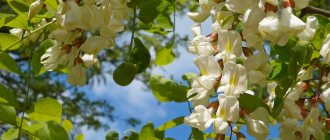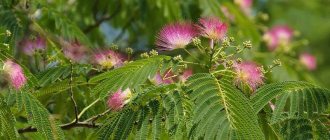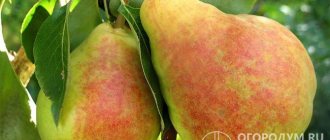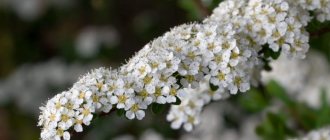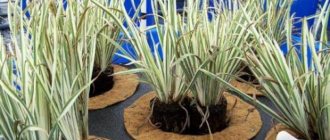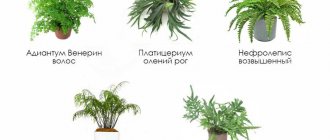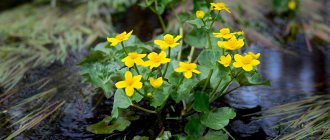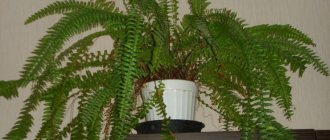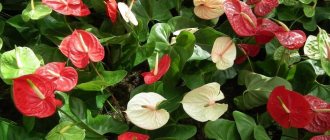An inconspicuous shrub with small foliage at first glance, yellow acacia is well known to every gardener. It is known as caragana tree, chiliberry, pea and pea plant, and poetic descriptions of this plant can often be found in literature. The culture is distinguished by its unpretentiousness, its ability to take root in any area and in the most remote corner, transforming it beyond recognition. In addition, flowering caragana is an early honey plant and produces a fragrant aroma.
American yellow acacia ornamental trees and shrubs: plant description
The species Caragana arborescens (in Latin) includes about 70 species. It is impossible to say that the birthplace of the yellow acacia is any specific place. The growing area of this group of plants is extensive - from the European Plain to the Far East. In nature, this shrub creates dense thickets and prefers forest-steppe zones.
In Russia, the crop has been known since ancient times under the names pea plant, pea acacia, pea acacia or American yellow acacia. All these are ornamental trees and shrubs from 2 to 7 meters high, similar in appearance.
If we talk about botanical characteristics, yellow acacia belongs to the Legume family. Its trunk and branches are even and smooth, covered with grayish-green bark. Crown diameter up to 5 meters. The stem is flexible and resilient. The root system is taprooted, with a large number of taproots formed on soil shoots.
Features of yellow acacia are the original shape of long leaves and unusual leaf arrangement. They can be collected in bunches of 3-5 pieces or alternate. The leaves themselves are bisexual, smooth, with 5 – 7 rounded, pinnate leaflets. The length of each of them is about 5 cm, the venation is reticulate. The color of the green mass changes during the growing season. In spring it is bright green, with the onset of autumn the shade changes to a more saturated one, yellow colors appear.
Yellow acacia flowers are sunny golden in color, moth-like, bisexual, can grow singly or be collected in bunches of 3-5 pieces. Botanical formula of the flower: K(4) C 4 A G1, where K is the calyx, C is the corolla, A is the stamen, G is the pistil. It blooms from mid-May, abundant flowering lasts no more than two weeks. Being a good honey plant, the culture is distinguished by the fact that its flowers emit a strong aroma.
When the period of active flowering ends, fruit formation occurs. These are beans, narrow boxes of a grayish-brown hue with 6 - 8 peas. The pods burst in the fall.
Acacia wood has a yellowish tint, with a brown core, and is very durable, hard and flexible. It is used for making handicrafts, and baskets are woven from young long shoots.
Chemical composition
The aerial parts of caragana are rich in essential oils, sugars, glucoside caraganin, alkaloids, flavonoids, including quercetin, myricetin, isorhamnetin. Scientists have also discovered vitamin C, saponins, resins, tannins, various organic acids, and the yellow-orange pigment carotene. The study of the chemical composition continues.
Beneficial features
In folk medicine, different parts of plants are used: roots, leaves, bark. The roots of K. arborescens were used to make general tonics and preparations to combat an inflammatory female disease - endocervicitis.
Extracts from the leaves are present in combination medications intended for the treatment of urolithiasis (urolithiasis).
For many ailments, the plant is used. It has anti-inflammatory, hepatoprotective, antitumor, analgesic, and sedative properties.
Skin, gastrointestinal, and female diseases are treated with products prepared from it.
It helps with:
- hypertension,
- nervous disorders,
- tumors,
- toothache,
- liver cirrhosis and many other health problems.
Caragana has health benefits
Harmful properties, risks, contraindications
In the past, caragana tree seeds were fed to birds, and in times of famine they were eaten by people.
The German Federal Institute for Risk Assessment (abbr. German BfR) believes that this is unsafe, as it links the consumption of raw seeds with the occurrence of gastrointestinal problems in children.
The institution's staff sees the need for further research in this area.
The remaining parts of the plants contain a small amount of toxic substances and do not pose a danger to humans and animals.
The only known contraindications are individual intolerance.
Caragana contains some toxic substances
The healing properties of yellow acacia
Yellow acacia is valued not only for its decorative appearance and practicality, but also for its medicinal properties. All its parts have found wide application in pharmacology and folk medicine:
- Yellow acacia flowers have antipyretic, anti-inflammatory, and expectorant properties.
- Honey contains about 35% glucose and over 40% fructose, has a beneficial effect on the state of the body as a whole and on the state of the immune system, and normalizes blood sugar levels.
- From the branches, bark and leaves of the pea, remedies for headaches and heartburn are prepared.
Recently, doctors increasingly advise using the roots and bark of yellow acacia to make decoctions and infusions for influenza and ARVI, allergies and rheumatism.
Spreading
The shrub can be found everywhere in the forests of Siberia, including in the Altai and Sayan Mountains; in addition, yellow acacia grows in the central and eastern regions of Kazakhstan, in the south of the Urals. It is not uncommon in the Caucasus mountains. Most often, seeds germinate in sparse undergrowth, on forest edges, and on small slopes. In the city limits you can see the plant as part of parklands.
Varieties of caragana tree
On the territory of our country, 17 species of yellow acacia are found in natural conditions. In addition, this shrub also has interesting garden forms. All decorative varieties require pruning and crown formation. In parks and garden plots you can see caragana:
- tree-like pyramidal shape (Pyramidalis), small trees up to 3 meters high with a pyramid-shaped crown;
- with a very compact crown (Cuculata) due to shortened shoots, densely covered with small leaves;
- with a spherical crown (Globosa), shrubs up to 2 meters high with light green pinnate leaves and brown-green smooth trunks and branches;
- dwarf (Nana), a shrubby form, growing no more than 1.5 meters in height, with spaced branches and yellowish bark;
- large-flowered (Grandiflora), the flowers of which reach a size of 3 cm, the height of the bush does not exceed a meter;
- with an unusual golden color of leaves (Albescens), having a standard shape.
Infusion
An infusion of acacia flowers and leaves is no less effective. It is recommended for the treatment of diseases such as atherosclerosis, headache, diathesis, heartburn, and some gastrointestinal diseases. In addition, it, like the alcohol tincture, can be used as an anti-inflammatory agent for diseases of the throat and oral cavity.
Carefully grind two tablespoons (without a slide) of the raw material, pour 200 ml of boiling water over it and let the product brew in a tightly sealed container for two hours. After this, the composition can be filtered through two layers of gauze and taken two tablespoons three times a day.
Yellow acacia: reproduction
The simplest method of propagating caragana tree is by seeds. In second place in popularity is propagation by vegetative methods: layering, dividing the bush, dividing the bush. Cuttings are considered not very effective, since the survival rate is 30%. It is rarely used.
Yellow acacia is a valuable early summer honey and pollen-bearing plant. In the area of natural growth, the honey productivity of the thickets reaches 300-350 kg/ha.
Yellow acacia seeds are sown in early spring, in March or April. Before planting, they are soaked in cold water for 24 hours to speed up the germination process. If seeds that have not been subjected to stratification are sown in open ground in April or May, the emergence of seedlings is usually observed after 20 - 30 days. When stratification is carried out at temperatures from +1 to +5 °C, seeds can germinate already at an air temperature of 10 °C, 15–40 days after sowing. Germination is usually high, and the sprouts are viable. As they develop, they are transplanted to permanent places.
Sometimes gardeners practice summer sowing using freshly harvested seeds. In the climatic conditions of the middle zone, yellow acacia fruits ripen in early August. Seeds can germinate if the air temperature is kept at 25 °C. In this case, the planting material must be mature. The germination rate and germination rate of immature seeds is much lower.
Yellow acacia honey has a light amber color, is transparent, has a delicate taste and exquisite aroma. It remains liquid for a long time and does not crystallize for up to two years, which distinguishes it from other varieties.
When propagating caragana tree by cuttings, material is taken that was harvested in the spring or summer during pruning. The lower sections are treated with a 0.005% solution of indolylbutyric acid for 16 hours. This improves root formation. The cuttings are planted in moist soil. They take root within 30 days.
For decorative forms of yellow acacia, experienced gardeners often choose propagation by grafting on the main species, and sometimes make layering. To do this, at the beginning of the growing season, the lower, older branch is bent to the soil, dug in, and watering is provided. Rooting occurs next spring. At this time, the cuttings are separated from the main plant.
The division of the bush is carried out in the presence of a large number of rhizome shoots. The best period for their separation is the spring months. For planting material, separate holes are made that are 70 cm or more behind the mother bush.
Honey plant
Yellow acacia has long been recognized as an excellent honey plant. This plant blooms from the end of May for two weeks. If the weather is cool in May, the flowering time is reduced to 8-9 days. The plant contains the most nectar on the fifth day of flowering. Under good weather conditions, one family of bees can bring more than five kilograms of nectar.
It is most actively released in cloudy weather, after rains, but at this time the concentration of sugar is sharply reduced (up to 40%). Nectar is released abundantly at a temperature of +15 degrees, while the sugar content in it increases to 65 percent. And in sunny and dry weather, the release of this valuable product practically stops.
Planting and care
Yellow acacia is an unpretentious plant to grow. She feels equally comfortable in brightly lit areas and in the shade, copes with severe frosts and can survive periods of drought. Planting and caring for caragana is not difficult; any gardener can do it. In the winter months, it can withstand air temperatures dropping to -45 °C, and in the summer - scorching heat. For planting, it can be given well-lit places in the garden that are unsuitable for planting other plants that may suffer from sunburn. They are not terrible for acacias.
With full compliance with agricultural technology, yellow stock is well accepted, gives annual growth and is highly decorative. Experts believe that planting yellow acacia is most effective in spring or autumn.
Yellow tree acacia is also undemanding to the soil. It tolerates a variety of soils, with the exception of waterlogged and highly acidic soils. Prefers areas with good drainage and the absence of groundwater lying near the surface. And the ideal option for American yellow locust is sandy loam soil.
Yellow acacia is not demanding regarding the regularity and abundance of watering. It can tolerate long dry periods. And stagnation of moisture is destructive for it. Therefore, you need to water the bushes no more than 3 times a week, approximately 12 liters of water for each bush. When determining the rate and amount of watering, it is worth focusing on weather conditions and the rate of evaporation of moisture from the soil surface.
Young yellow acacia seedlings need regular feeding. They can be applied from March to August, 2 times a week. You can feed the plant with solutions of mullein and chicken manure in a ratio of 1:50. Sometimes, to stimulate growth and development, caraganas plan to apply complex mineral fertilizer in the spring months.
Starting from the second year of life, the pea plant needs forced formation. Yellow acacia is pruned in the spring, before buds appear. In the summer, revitalizing pruning is carried out to rid the bush of damaged and old shoots. In winter, the trunks of young bushes are covered with burlap to protect them from the cold.
An adult acacia requires only pruning and timely watering. It rarely suffers from pests or diseases, so it should not be treated with special preparations for prevention.
Tincture
Herbalists make an alcohol tincture from the flowers and twigs of yellow acacia, which is very successfully used in the treatment of arthritis of various etiologies, as well as rheumatism.
To prepare such a composition, you need to pour 200 g of dry and crushed raw materials into a container. It is advisable that it be a dark glass jar or bottle. Pour 500 ml of high-quality vodka into it, close it tightly, and place it in a dark place for two weeks. The bottle must be shaken periodically.
This tincture is used to rub sore joints. After this, they need to be wrapped in a warm woolen scarf or scarf. If the pain is very severe, add grated fresh horseradish to the tincture in a 1:1 ratio with the tincture.
By using this product internally, you can strengthen your immune system. The tincture, diluted with water in a ratio of 1:10, is recommended for use as a mouth rinse for various inflammations.
Acacia tree in landscape design
Yellow acacia is a common inhabitant of household plots, as well as city parks. With its help, they create forest shelterbelts, strengthen coastlines, protect the soil from weeds, and sands from forestation.
Gardeners and landscape designers value chiliberry because it enriches poor soils, as it is able to accumulate nitrogen substances. In addition, the caragana tree never suppresses its neighbors in the area.
In single-row hedges, where acacia is most often used, the distance between bushes should be at least fifty centimeters. In double-row hedges, this distance should be increased to seventy centimeters.
Designers often include yellow acacia in spectacular compositions, for example, when landscaping parks and alleys. It also easily forms a beautifully blooming hedge. Moreover, even a beginner in gardening can cope with the task of creating it. To do this, in the fall the bushes must be planted so that they are located at a distance of 30 cm from each other, in a checkerboard pattern. In the spring, all that remains is to do formative pruning.
All articles about caraganas on the site can be read by following this link...
The heady floral aroma of blooming yellow acacia leaves your head spinning every spring. But the advantages of culture are not limited to this. The most useful acacia honey, infusions for treating diseases, decorating the most desolate areas of the garden, beautiful hedges - all this is available to gardeners who do not spare space on their plot for yellow acacia.
Grass
Leaves, branches and bark, which healers combine with the word “herb,” are used to prepare medicinal products that effectively help with headaches, some liver diseases, atherosclerosis, and heartburn. The bark of the plant is an excellent and time-tested remedy for the treatment of scrofula and catarrh of the upper respiratory tract.
Decoctions of yellow acacia leaves are prescribed for allergies, and the branches on which the buds have not yet opened are used as a powerful bactericidal agent.
Forms of application
1. Alcohol tincture of twig flowers: you need to infuse 200 g of dried raw material with 500 ml of vodka for two weeks in a dark, cool place. The container for the tincture should be made of dark glass. The tincture should be shaken periodically.
Used to rub sore joints, after which the joints need to be bandaged with a warm scarf. For severe pain, this tincture is made with the addition of freshly grated horseradish in a 1:1 ratio with yellow acacia. If you dilute the tincture with water 1:5 or 1:10, you will get an excellent mouth rinse for inflammatory processes.
2. Infusion of leaves and flowers: pour 2 tbsp of boiling water over a glass. leave spoons of crushed leaves for two hours in a closed container. Strain and consume 3 times a day, two tablespoons. This good anti-inflammatory agent is used for diseases of the throat and oral mucosa. The infusion is used in the treatment of headaches, diathesis, heartburn, and gastrointestinal diseases. 3. Bark decoction: pour 500 ml of chopped dry yellow acacia bark (1 tablespoon). boiling water and boil for 8-10 minutes, then leave for 2 hours, strain. You should drink half a glass three times a day. Take for colds, gastrointestinal diseases, inflammation of the female organs. It is also used for washing wounds and rinsing for sore throat, inflammation of the throat and gums.
4. Infusion of leaves and bark. Helps get rid of headaches, heartburn, the infusion is effective for atherosclerosis and liver diseases.
Wintering
Caragana tolerates frost well and does not require protection. However, specimens in tubs cannot overwinter outside. They are brought into a room protected from frost, where the temperature ranges from 0 to +5 ° C. To avoid dropping leaves, keep the tubs in the dark. Water enough so that the earthen ball does not dry out completely.
Caragana tolerates cold well, but not those plants that overwinter in tubs
Procurement of raw materials
The aerial parts of caragana mane (leaves and twigs) are collected by hand in the spring during flowering or in the fall during wilting. The raw materials are dried in a dry, ventilated room or under a canopy, spread out on a clean cloth or paper.
When going to collect parts of Caragana jubata, keep in mind that it is listed in the red books of certain regions. It should be handled with care. It is prohibited to dig up a bush by its roots.
Summer green shrubs from the genus Caragana are interesting plants that are low maintenance and well suited for growing in the garden for a variety of purposes. Caraganas are mainly known as ornamental and reclamation perennials. K. mane is used as a medicinal plant. Medicines prepared from its roots or aerial parts help with many diseases.
Diseases, pests
Typically, representatives of the genus Caragana are little susceptible to diseases and pest damage. Infection with cinnabar nectria (ascomycete fungus), which causes the death of branches, is possible.
The fruiting bodies of the parasite are formed on branches that are damaged, dead or damaged by frost. Caraganas in hedgerows are especially vulnerable.
To prevent infection or severe spread of the disease, it is recommended:
- use a sharp cutting tool for pruning;
- remove charged parts;
- use a wound closing agent, especially for large injuries;
You also need to trim dry, diseased, frostbitten and broken branches to healthy wood.
